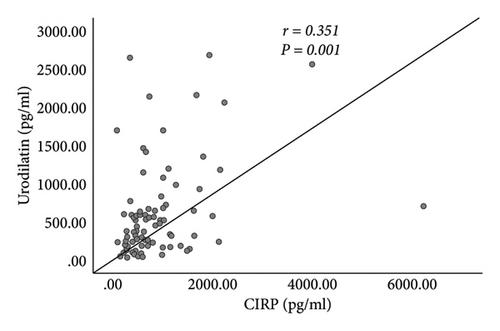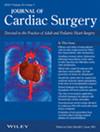Predictive Value of Serum CIRP in Acute Kidney Injury after Total Aortic Arch Replacement
Abstract
Objectives. To investigate the predictive value of serum cold-inducible RNA-binding protein (CIRP) and postoperative acute kidney injury (AKI) after total aortic arch replacement. Methods. Eighty-six patients with acute Stanford type A aortic dissection (ATAAD) admitted to hospital from October 2019 to February 2021 were retrospectively selected as the study subjects. All patients underwent total aortic arch replacement under moderate hypothermic circulatory arrest (MHCA) with selective antegrade cerebral perfusion (SACP). Detection of the level of serum CIRP after admission and perioperative clinical data of patients were collected and analyzed. Kidney Disease: Improving Global Outcomes (KDIGO) criteria were used to stage renal function. Patients were divided into a non-AKI-3 group (n = 70) and an AKI-3 group (n = 16) according to the stage of postoperative renal function. The risk factors for postoperative AKI KDIGO stage 3 were analyzed by a multivariate logistic regression model. The receiver operating characteristic (ROC) curve was used to evaluate the diagnostic efficacy. Results. In 86 patients, postoperative AKI-3 stage accounted for 18.6% (16/86). Compared with the non-AKI-3 group, the AKI-3 group had a higher preoperative BMI index, C-reactive protein, and CIRP level; a longer intraoperative cooling time, cardiopulmonary bypass time, and aortic cross-clamping time; and a higher intraoperative coronary artery bypass ratio (all P < 0.05). Multivariate logistic regression results showed that CIRP (OR = 1.001, 95% CI: 1.000–1.002, P = 0.012) was an independent risk factor for postoperative AKI KDIGO stage 3. Conclusion. The serum CIRP is associated with postoperative acute kidney injury after total aortic arch replacement in ATAAD patients and may serve as a predictive indicator for early detection and intervention to improve the prognosis.


 求助内容:
求助内容: 应助结果提醒方式:
应助结果提醒方式:


